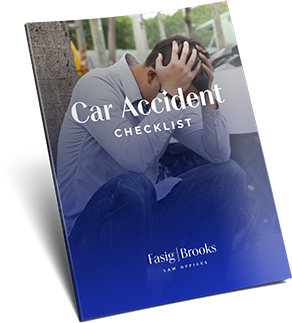
A frustrating part of practicing personal injury law is advising clients on whether to accept a settlement or take their case to trial. Clients are understandably confused. They’ve got a cousin/neighbor/co-worker who was in a car crash and wasn’t hurt nearly as bad and he got four times as much money. Why should my clients take less when they’ve suffered more?
The truth is that the same exact accident, causing the exact same injuries to your client, can have widely different values, depending on the context in which it occurs.
One example is when the people who cause the accident don’t have enough insurance – or any – to cover the full value of the injuries caused by their carelessness. If the client did not purchase uninsured motorist coverage, which is often the case, and the at-fault driver is “judgment proof” (uncollectible), a client may recover nothing or an amount that is woefully inadequate to make up for the harms and losses he or she has suffered. In cases where there is some insurance but not enough to restore the client back to his or her pre-accident condition, injured clients may recover something towards their medical bills, but they get nothing for their lost wages, pain, suffering, or lost capacity to enjoy life.
Another example is when the wrong-doer enjoys the protections of sovereign immunity. In the past, when an actor of the sovereign (government) negligently injured another person, the injured party was strictly forbidden from suing for damages. Later, some sovereigns waved their immunity and allowed lawsuits for damages to proceed against the government. However, there are strict conditions and limitations on those claims, including a cap on the amount that can be collected by the injured persons per claim and a limit on the amount of fees the plaintiff’s attorney can receive. As a result, it is often quite difficult for a person injured by a sovereign employee to find adequate legal representation.
Remember, suing a sovereign means that your fellow taxpayers will be footing the bill, rather than the wrong-doer, himself. That also makes these cases very unattractive and less successful than claims against non-sovereign actors.
The last example is the hardest to discuss, but some injuries simply have a higher value than others. A five-star chef who had to close his successful restaurant because he spent nine months rehabbing after multiple surgeries will have a higher lost earnings claim than a college student who was unemployed. Additionally, some people simply heal better than others and recover quicker from their injuries.
It often comes down to how much insurance coverage the at-fault party has; it’s not about your injuries; it’s about who hurt you.
Two people with the exact same injuries could receive a different recovery simply because the person who hurt them has a certain amount of insurance coverage. If a person is catastrophically injured in a car accident and loses a leg due to the other driver’s negligence, he may only recover $250,000 if that is all the insurance the at-fault driver has and he is otherwise uncollectible. But that same person with those same injuries could recover $500,000 against an at-fault driver who has $500,000 in insurance.
Some people see this as a reason not to carry a lot of insurance. They figure if they don’t have a lot of insurance, they won’t be such an easy target. That’s a discussion you need to have with your family, your insurance agent, and possibly your attorney and financial advisor. It’s a risky position to take.
Although it’s not fair to the person who suffers personal injury due to someone else’s negligence, the truth is that the context in which the injury occurs has more to do with the value of the case than the actual harms and losses personally experienced by the injured client.





